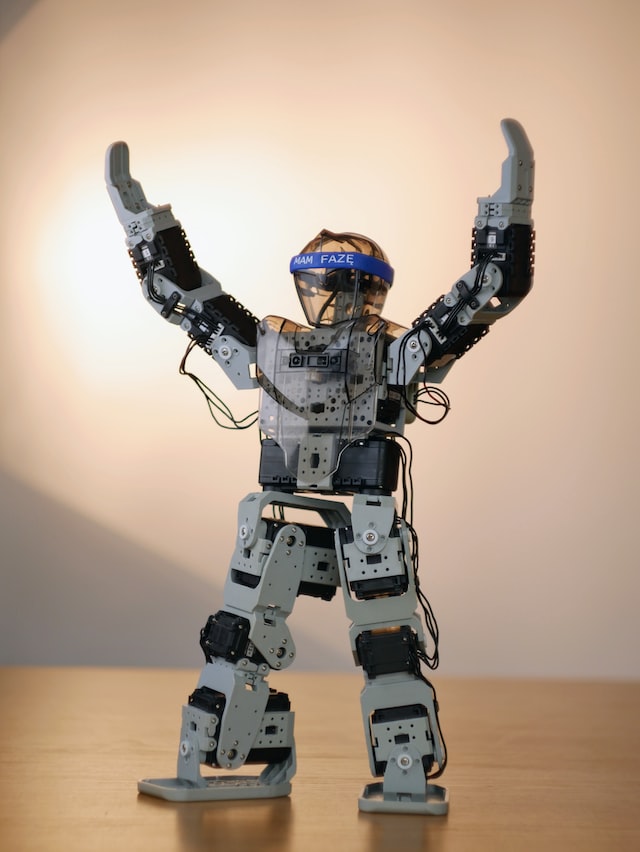
Actuators enable robots to move, interact and manipulate their environments. Actuators convert energy (electrical, hydraulic, pneumatic, …) into force or physical motion. They enable robots to move, grip objects and move joints. Some common actuators include:
- Electric Motors which convert electrical energy into rotational or linear motion. The most common types of motors in robots include Direct Current (DC) motors, stepper motors and servo motors.
- Hydraulic Actuators utilize pressurized fluid to generate mechanical force. They provide strong forces and commonly found in industrial robots. They provide smooth and precise motion control and are found in heavy-lifting and high-speed movement applications.
- Pneumatic Actuators utilize compressed air or gas to produce motion. They are light weight, cost-effective and capable of rapid movements. They are used in applications that require quick and repetitive actions such as gripping and picking up and placing objects.
Some more exotic actuators include:
- Shape Memory Alloys (SMAs) are unique materials that can change their shape in response to temperature changes. Typically they deform when cold is applied and return to their pre-deformed shape when heated. They offer lightweight, compact actuation and are typically used in micro-robotics and medical devices.
- Piezoelectric Actuators include materials that generate electricity when subjected to mechanical stress (using the Piezoelectric effect). They feature high displacement accuracy, high response speed and high force generation. They are found in industrial machinery, medical applications and household goods.
- Electroactive Polymer (EAP) Actuators are a type of soft actuator that changes size or shape in response to an electrical stimuli. They most closely emulate biological muscles. They have been used in robot fish, catheter steering elements, miniature grippers, loudspeakers and dust-wipers.
Robot STEM Kit Actuators
Robot STEM kits typically include basic and beginner-friendly actuators. The kits focus on educational purposes and typically do not include advanced or specialized actuators. Some of the common types included are:
- DC Motors are used to drive wheels and power robotic arms
- Servo Motors are used to control angular position and are used in robotic arms, grippers and other mechanisms that require controlled movements. They often include built-in position feedback making them easier to control.
- Pneumatic Actuators may be included in special kits to demonstrate their capabilities. Using air pressure in a syringe or ballon-like mechanism they can generate motion, gripping and pushing small objects.
- Solenoids are electromagnetic devices that also can but used in pushing and pulling applications such as robotic fingers and various types of switches.
